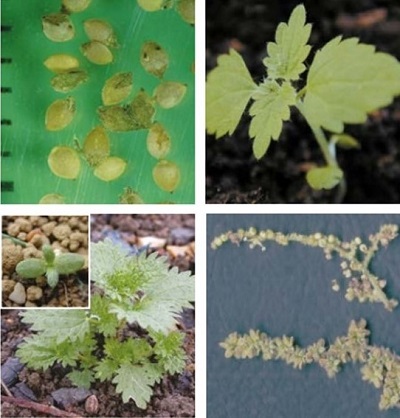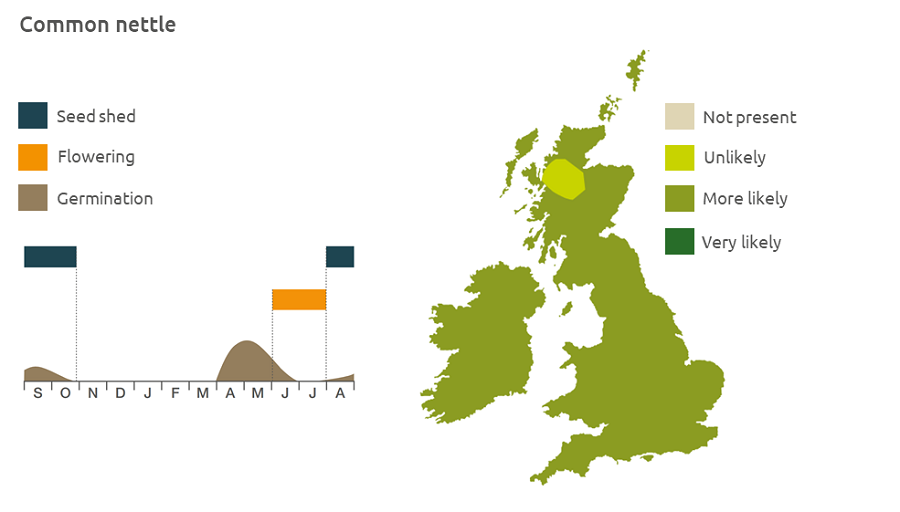- Home
- Knowledge library
- Distribution and biology of common nettle in the UK
Distribution and biology of common nettle in the UK
Common nettle is a broad-leaved arable weed with value to biodiversity. Find out how to identify and control it.
Overview
Common nettle (Urtica dioica) is frequently found in waste places and field margins, though it does encroach onto arable land. It is a particular problem in perennial crops and grassland. Some young shoots of nettle can overwinter, but the plant mostly dies back, growing strongly in spring. The plants reproduce when stolons are fragmented or from seed ingested by animals.
- It has value to biodiversity
Description
This common hedgerow perennial grows to above 1.5 m and has extensive creeping rooting stolons. The leaves are pointed with toothed edges. The stem is square in cross section and covered with stinging hairs. The tiny green male and female flowers are borne in tassels by different plants.
Key features
Young plant: It has longer and more triangular first true leaves than annual nettle.
Plant: It is tall and upright, with leaves larger than those of small nettle. The leaves and stem are covered in stinging hairs.
Lookalikes
Common nettle may be confused with small nettle, however it has shorter cotyledons than small nettle and the first true leaves of common nettle are longer and more triangular.

Location and life cycle

Geographic distribution
Common nettle is found in a wide variety of habitats including cultivated and waste ground, scrub, unmanaged grassland, and fen and river banks, up to an altitude of 850 m.
Soil type
It prefers nutrient-rich soils.
Seed statistics
- Seed longevity: >5 years
- Seed weight: 0.13 mg
- Seeds/flower: 1
Management
It will be reduced by continuous cutting. For control, use glyphosate in fallow or selective treatments in grassland.
For advice on herbicides, please speak with your agronomist or adviser.
When was this information last updated?
This page is based on content from the encyclopaedia of arable weeds publication. Since it was first released in 2008, the publication has been redesigned several times but not revised. However, it remains a good foundation for general information on the distribution and biology of weeds.

